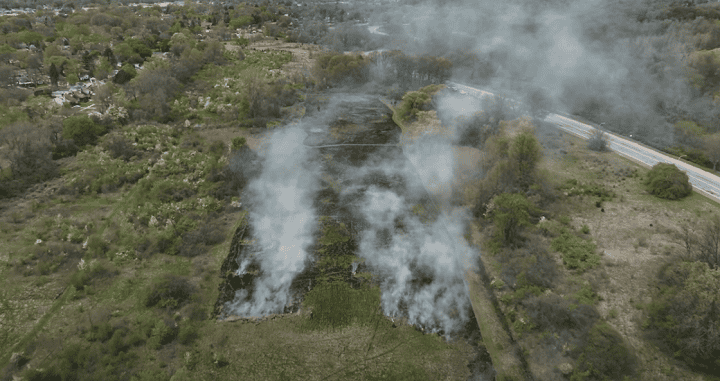Earlier this month, nearby residents and visitors at Detroit’s largest park might have been alarmed to see flames and smoke rising from its 60-acre native prairie. However it was not a wildfire, but a carefully orchestrated natural restoration, conducted through a strong regional partnership.

The Huron-Clinton Metroparks worked with the City of Detroit Parks and Friends of Rouge Park to conduct a prescribed burn, which is a highly controlled and proven management practice to maintain a healthy prairie ecosystem. The results include benefits for habitat restoration, invasive species management, and promoting the growth of certain trees, wildflowers, and plants.
This video provides a rarely seen “bird’s eye view” of the process, which involves specialized contractors, detailed plans and permits, along with careful timing for appropriate weather conditions to ensure a safe and successful burn.
The Metroparks launched their prescribed burn program in 2002 and safely burns over 250 acres in Metroparks locations every year to promote healthy native ecosystems. “We’re excited to team up with Detroit Parks and Recreation to share resources and support stewardship efforts in our region,” said Amy McMillan, Director of the Huron-Clinton Metroparks. “Our Natural Resources Department has staff experienced in prescribed burns. We know that many of the Metroparks are a fair distance away from those living in the city, and this partnership was one way we could bring a little bit of the Metroparks closer to the city – the partnership just made sense.”
This project is just one example of the partnership’s work to promote native species and biodiversity over multiple years by removing invasive species and restoring natural landscapes. Biodiversity is important to sustaining productive, thriving ecosystems, where multiple species of flora and fauna work together, and benefit from each performing their own role.
The partnership is also working to improve trails within the area so that park users have easier access to enjoy these natural areas close to home, building toward the 100-year anniversary celebration of Rouge Park in 2023. If you haven’t visited this unique destination in person, take a virtual tour here with SEMCOG’s Trail Explorer!

Leave a Reply